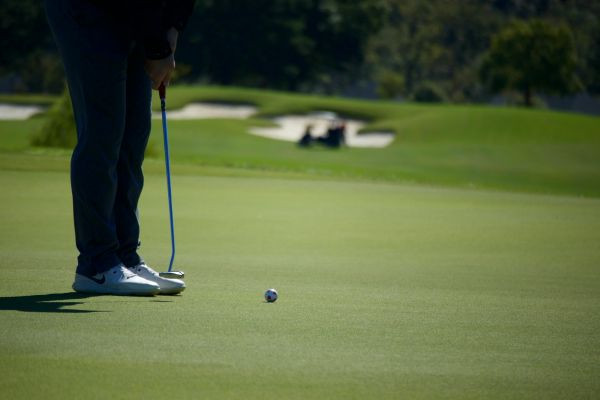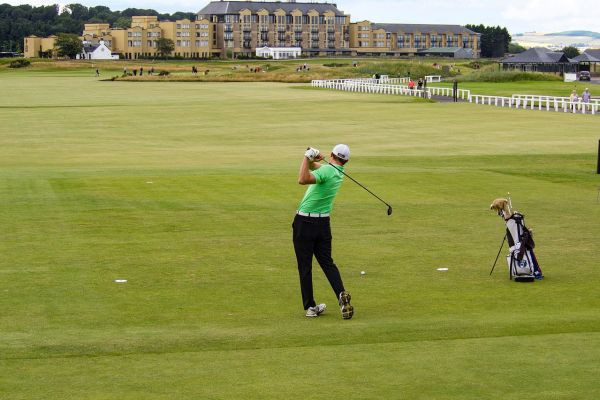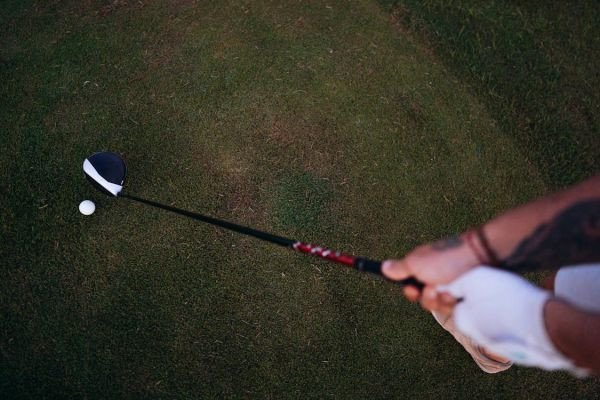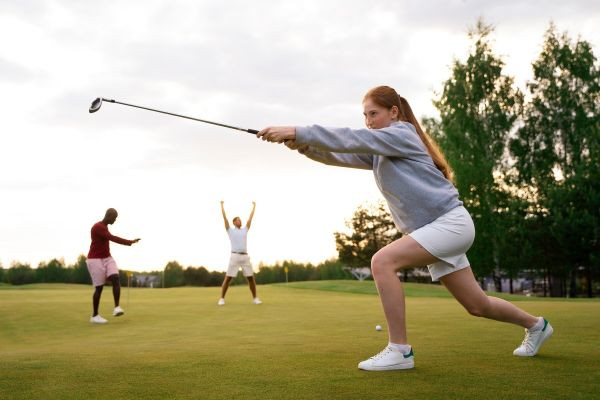The Revolutionary Right Wrist Technique for Solid Ball Strikes
If you're into golf or just getting started, you’ve probably heard how important your swing is, right? Well, guess what, a big part of that swing comes down to what you do with your right wrist (assum..

If you're into golf or just getting started, you’ve probably heard how important your swing is, right? Well, guess what, a big part of that swing comes down to what you do with your right wrist (assuming you’re right-handed).
It’s kind of like the secret sauce that can make or break your shot. When you get the wrist action right, you can seriously boost the quality of your shots. We're talking about everything from how straight your ball flies to how far it goes.
Overview of the Technique
We're going to dive into this right wrist technique that's kind of a game changer. It's not just another tip; it’s a method that could really shake up how you play.
Once you get the hang of it you’ll start hitting the ball more consistently and with more power. Think of it as upgrading your golf skills to a whole new level. This isn't just about hitting the ball harder; it's about hitting it smarter.
By the end of this guide you're not only going to understand why this technique is so awesome but you'll also be on your way to making those improvements in your own game.
The Fundamentals of Right Wrist Action
Understanding Wrist Anatomy
So before we get into the nitty-gritty of the wrist technique let’s talk about what’s going on with your wrist. It might seem just like a small part of your arm but trust me it’s complex. Your wrist has a bunch of tiny joints that work together and let your hand move in all sorts of directions.
Now why should you care? Well in golf these little movements in your wrist can have a big impact on your swing. They help you get the right angle and leverage when hitting the ball which is super important if you want to send your golf ball flying straight and far.
Key Movements: Dorsiflexion and Radial Deviation
Okay let’s break down the main wrist moves you need for an awesome golf swing. First up we have dorsiflexion—this is just a fancy term for when you bend your wrist backward. Then there's radial deviation which is when you move your wrist towards your thumb.
These might sound like complicated terms but here’s the scoop: they’re crucial for setting up a powerful and effective swing. When you bend your wrist back and then swing it towards your thumb you’re basically priming your golf club to hit the ball with just the right amount of force and precision. Getting these moves down can really level up how you play.
Step-by-Step Guide to the Right Wrist Technique
Proper Grip and Trigger Finger
Let’s start with how you hold the club. Getting your grip right is super important. Put a bit of focus on your trigger finger—that’s your index finger on your right hand. This guy has a big job because it helps you keep control of the club during your swing. It kind of acts like a guide making sure the club swings where it should. So make sure this finger has a good firm grip but isn't squeezing the life out of the club handle.
The Backswing and Wrist Position
Now as you start your backswing you need to pay attention to your wrist. Keep it bent backwards—that’s what we talked about before dorsiflexion. This isn’t just for fun; it creates the tension and angle your wrist needs to power through your swing. Think of it as pulling back a slingshot. The more you can pull it back the more power you'll have when you let go.
Transition and Downswing Mechanics
Moving into the downswing keeps that wrist bent back as you start but now you’re going to shift it towards your thumb—Yes that’s radial deviation. This move is like aiming the slingshot right before you release it. It makes sure your clubhead follows a good path and speeds up correctly as it smacks the ball. This combo of bending and shifting your wrist is key for a swing that feels smooth and packs a punch.
The Role of the Right Palm in the Downswing
During the downswing, think about your right palm pointing down towards the ground. This isn't just to make your hand feel awkward—it's actually about steering your club in a controlled way right towards the ball. This hand position is a big deal because it helps you keep the club under control and smack the ball just right maximizing the impact.
Release and Follow Through
Finally, we get to the release and the follow-through. This is where everything you’ve set up with your wrist comes into play. You want your wrist to smoothly go from that cocked position to fully releasing as you hit the ball. It’s like letting that slingshot fly. This is what sends your ball soaring through the air. If you do it right, it feels smooth, powerful and hey, it’s pretty satisfying watching that ball fly exactly where you want it to go.
Practical Exercises to Strengthen Right Wrist Action
Drills for Enhancing Wrist Flexibility and Strength
Okay, let's talk about some drills to get your wrist in top shape for golf. You'll want to work on making your wrist more flexible and strong because, honestly, a lot rides on how well you can move your wrist during your swing. A cool way to start is by using a light dumbbell or a resistance band. These aren't just for bodybuilders or anything; they're perfect for golfers too.
Try this: grab a light dumbbell, hold it in your right hand and gently bend your wrist up and down. This works on that dorsiflexion we talked about. You can also use a resistance band to pull your wrist in different directions, strengthening those small muscles and joints.
Doing these exercises regularly, like a few times a week, can really boost your wrist flexibility and strength. This means better control and power in your swings—exactly what we want.
Using Props to Improve Technique
Now, using props can seriously help in practicing your golf swing, especially for getting your wrist angles just right. You might think, "Props? Like in a theater?" Not exactly. I’m talking about things like a golf alignment stick or even a ruler from your school bag. These tools help you see and feel the correct positions during your swing.
For instance, holding a golf alignment stick along the length of your club can help you maintain the right wrist angle as you swing. It's like having a guide right there with you. Or you can use a ruler to practice keeping your wrist straight when you don't have your club handy. Swing with the ruler and watch how your wrist moves.
These might seem like small things but they make a big difference in training your muscles to remember the right movements, which is what muscle memory is all about. Practicing with these props a few times each week can make your actual swings on the course feel more natural and accurate.
Common Mistakes and How to Avoid Them
Over Rotation and Early Release
So, one thing a lot of golfers mess up, including me when I started, is over rotating their wrist or letting go too soon during the downswing. What happens then? Well, you probably won’t hit the ball as hard or as accurately as you could.
It’s like letting go of a slingshot before aiming properly—you won’t hit your target. The trick is to keep your wrist position solid a bit longer as you swing. It sounds simple but it makes a huge difference. Keep practicing holding that wrist back just a tad longer and you'll start to feel when it's the right moment to let go and send the ball flying.
Insufficient Wrist Cocking
Another common hiccup is not cocking the wrist enough during the backswing. Imagine you’re trying to throw a ball but only pull your arm back halfway. It's not going to go very far, right? The same goes for your golf swing.
If you don’t cock your wrist enough, you won’t get as much power. To fix this, try some drills that focus specifically on bending your wrist back more during the backswing. Keep practicing this until it feels natural and you’ll notice you can hit the ball harder without needing to swing any faster.
Advanced Techniques for Experienced Golfers
Adjusting the Wrist Technique for Different Clubs
Now, if you’ve been playing golf for a while, here’s a tip: you might need to tweak how you use your wrist depending on the club you're using. For instance, swinging a driver isn't quite the same as swinging an iron.
A driver usually needs a bit more of a sweeping action so you might not cock your wrist as much. On the other hand, irons benefit from a sharper wrist cock to get that nice, clean loft. Paying attention to these small changes can really up your game, making you much more versatile on the course.
Integrating Lower Body Movements
And here’s something for those who feel pretty confident about their wrist action and are ready for the next level: start working on how your lower body syncs up with your wrist movements. This isn't just about your arms or wrists; your hips and legs are very important too.
They should move in harmony with your upper body. Think about how a pitcher in baseball uses their whole body to throw a fastpitch—it’s the same idea. Get your hips and legs into it and you’ll add a ton of power and stability to your swing. Practice this integration slowly at first, then speed up as you get more comfortable. You’ll feel the difference when everything clicks.
Conclusion
Like anything worth doing, getting good at this takes practice. Make sure you’re putting in the time to practice these techniques. If something feels off don’t be shy about asking for help. A coach or even a more experienced player can offer feedback or you could use video analysis to really see what’s happening in your swing.
Keep at it, tweak your approach as needed and soon you'll see the kind of golf shots that make you feel like all the practice was worth it. Just keep swinging and you'll get there!
Frequently Asked Questions (FAQs)
What is the most important aspect of the right wrist technique in golf?
Honestly the biggest deal with the right wrist technique is keeping your wrist bent back (that’s dorsiflexion) during the backswing and then shifting it towards your thumb (radial deviation) as you swing down. This combo is very crucial because it helps you transfer power effectively. It’s like setting up a one-two punch to make sure your swing has all the power it needs.
How often should I practice these wrist techniques to see improvement?
You should hit the practice sessions pretty regularly if you want to see some real changes. I’d say aim to practice these wrist moves several times a week. The more you do it the more natural it’ll feel and you’ll start to see your swings get a lot smoother and more powerful.
Can improving my right wrist action help reduce my golf handicap?
Yes, getting better at your right wrist action can make a huge difference in how efficiently and effectively you swing. This could definitely help lower your golf handicap because you’ll likely be hitting more accurate and powerful shots which is always good for shaving off a few points.
How can I check if I’m correctly executing the right wrist technique?
One of the best ways to check your technique is to use video analysis tools. You can record your swing and then watch it back to see exactly what your wrist is doing. Or working with a golf coach can be very helpful too. They can watch your swing in real-time and give you instant feedback on what to tweak.
Does the right wrist technique vary for different types of golf shots?
Yes, it does. Depending on whether you’re driving off the tee or hitting an approach shot you might need to adjust your wrist technique a bit. Each type of shot might require a slightly different move to get the best results. It’s all about being versatile and adapting your wrist action to fit the shot you’re taking.








































































